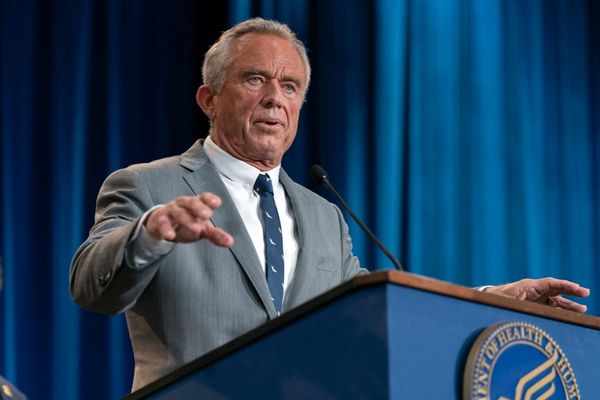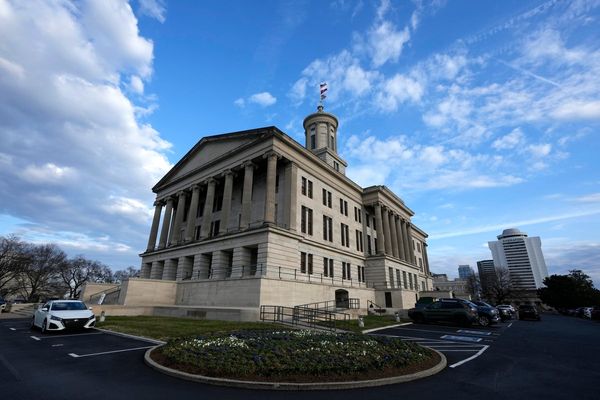Donald Trump fulfilled his vow to slash “intrusive” environmental regulations in favor of monied energy conglomerates. Shortly after taking office, he announced the United States’ withdrawal from the Paris Climate Agreement. In 2018, he moved to formally replace Barack Obama’s landmark Clean Power Plan. Trump lowered limits on methane emissions from drilling operations on public lands; stalled stricter rules for power plants that discharge mercury and other toxic contaminants into waterways; and intervened on behalf of Alaskan miners eyeing deposits beneath the country’s largest salmon run.
Altogether, The New York Times counts at least 95 environmental rules the president has rolled back, many of which are seen as a boon to the county’s energy sectors. Now you can add another reversal to the list: On Thursday, Trump announced that his administration will weaken a longstanding set of regulations designed to assess the environmental impact of proposed highways, oil and gas pipelines, and other large-scale projects. The president has taken aim at the National Environmental Policy Act (NEPA), which for the past 50 years has required federal agencies to conduct comprehensive environmental reviews of projects before giving their seal of approval.
The changes could have an outsized impact on rural Texas, where new sections of an interstate highway from Laredo to Texarkana are being hotly pursued and sweeping natural gas pipelines are creeping from West Texas to the Gulf. But it could also spur the development of widespread mining across South Texas, where a rare underground resource has largely been left untapped.
This part of Texas, starting just below San Antonio and moving south along the Gulf Coast, has long been known to host sizeable deposits of uranium oxide, also known as “yellowcake,” a crucial ingredient for producing nuclear power. The South Texas deposits are the third largest in the country, behind sections of Colorado and Wyoming. In 2015, the United States Geological Survey reported that it had located an additional 220 million pounds of uranium throughout the region’s sedimentary formations, a discovery that more than tripled the amount that had previously been identified. The news was met by the energy generation industry with little more than a shrug; uranium prices had been in the dumps since the 2011 power plant meltdown in Fukushima, Japan. At the time of the discovery, Corpus Christi-based Uranium Energy Corp. was the only company actively processing the radioactive ore in Texas, with mining sites in Goliad, Karnes, Live Oak, and Bee counties.
But today, some market watchers are bullish on uranium; after a 10-year slump, prices are looking to rebound due to low domestic supplies and tensions with Russia and China, who provide almost all of the uranium used in U.S. nuclear power plants. So it doesn’t hurt that the Trump administration has shoved aside pesky environmental regulations that irk energy producers.
If mining in Texas picks up, it could spell trouble for those who live in close proximity to uranium deposits: So-called “hardrock” mining activities—uranium, gold, copper—pose severe pollution risks, environmental advocates say. The hardrock mining industry is the biggest source of toxic water pollution in the country, according to the National Wildlife Federation. Forty percent of watersheds in the western United States have been contaminated by waste from those mines.
Uranium mining has been a headache for people living in the arc of Texas counties stretching from Karnes, southeast of San Antonio, to Zapata, near the state’s southern tip. Kleberg County officials fought for years with a mining company over groundwater. In Karnes County, fishing holes and stock tanks dotting the countryside were once open-pit uranium mines. With no one to clean them up, they’re simply part of the landscape now.
Any new uranium mines in Texas likely would be subject to NEPA, which lays out the framework for assessing how projects of “major federal action” would affect the environment. In the past, NEPA has been a valuable tool for environmental advocates and residents to make their concerns about projects heard. For example, the federal government stalled a contentious, $1 billion oil terminal project in Port Aransas last year by requiring that further study be done.
Trump’s proposed changes to NEPA would impose page limits on environmental reviews, along with limiting the type of evidence that federal regulators can consider. The changes announced Thursday have the potential to massively impact how environmental damage is weighed when projects are being considered, advocates say. “The president’s proposal to hamstring the National Environmental Policy Act harms both our environment and our democracy,” said Aaron Mintzes, a policy expert at the Washington, D.C.-based Earthworks. Drew Caputo, a lawyer for Earthjustice, told the Washington Post that the changes “would basically make the federal government become an ostrich, sticking its head in the ground rather than thinking about the environmental impact of its actions.”
Read more from the Observer:
-
Labor Away: Family planning clinics and abortion clinics across Texas have been closing at an alarming rate. Rural hospitals are shuttering their maternity wards. For many Texans, this means traveling hundreds of miles just to access basic reproductive health care services.
-
‘Baby Jails’ Chronicles America’s ‘Shameful’ Treatment of Migrant Kids: In his new book Baby Jails, author Philip Schrag reflects on the past and future of a threatened ruling that limits the detention of migrant children.
-
Five Times the Effects of Climate Change Loomed Over Texas in 2019: From sweltering droughts to a toxic algae bloom spreading in Texas waterways, the Observer takes a look back at the direct and indirect impacts of the climate crisis in Texas.







